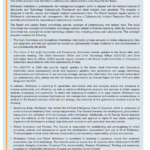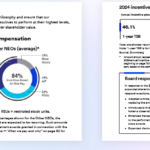By now, you might be asking the question: “What is ‘transparent’ disclosure anyway?” I can tell you for starters that transparency means something that is far more than plain English, far more than proxy design. It’s about clearly communicating – through corporate disclosure – what companies want the public to know and what investors and other stakeholders care about the most.
And I can tell you that “transparency” doesn’t necessarily mean that you need to disclose everything. It doesn’t change the definition of “materiality.” It doesn’t change what the regulations require – and what they don’t require.
It’s All About Building Trust to Create Real Value
Transparency is about taking disclosure practices a step further, by applying best practices and data analytics to establish transparency as the critical link that builds trust between companies and the end users of their corporate disclosures, the readers. To establish universal standards to build trust. Trust is good for business. It creates real value.
As I’ve gotten to know our mission, as I’ve gotten familiar with “transparency” and the 237 criteria that has been developed to evaluate it, the best way to describe it perhaps is that “transparent” means “being honest in our disclosures.” And that would even include honesty about a company’s bad practices. It’s up to investors and other stakeholders to reward or scold.
The reality is that few companies want to disclose they have bad practices. And the law requires them to not be misleading or omit material information when making a disclosure. So most companies strive to have good practices – or at least not have bad ones.
It’s important to note once again that being transparent doesn’t mean that a company has to disclose everything. This is not a movement that is looking to force companies to give away their secrets to success, their confidential plans for the future. This is more about “when you do make a disclosure, do it in a way that is easy for readers to find, understand and put in context.” That kind of thing.
As I blog about each and every one of the criteria that the Transparency Scientific Committee uses to evaluate disclosures – there are 237 of them, so it will take some time – you will become more comfortable with what we mean about “transparency.” You’ll learn more about the “Five Pillars of Transparency,” which include:
- Accessibility – Readers can quickly find pertinent information in a document and information is presented in a manner that is easy to digest.
- Precision – The disclosure prioritizes thoughtful reporting and includes critical information beyond requirements of compliance that helps readers understand the company.
- Comparability – Information is summarized appropriately and presented in a way that facilitates comparisons across companies and against readers’ own guidelines, criteria and expectations.
- Availability – Readers can easily find the document(s) they want in the format and language they need.
- Clarity – Writing is in clear, plain language so that disclosures are immediately understood by the reader.
Learn more about what transparency is – and isn’t – in “A White Paper on Disclosure Transparency.”




















